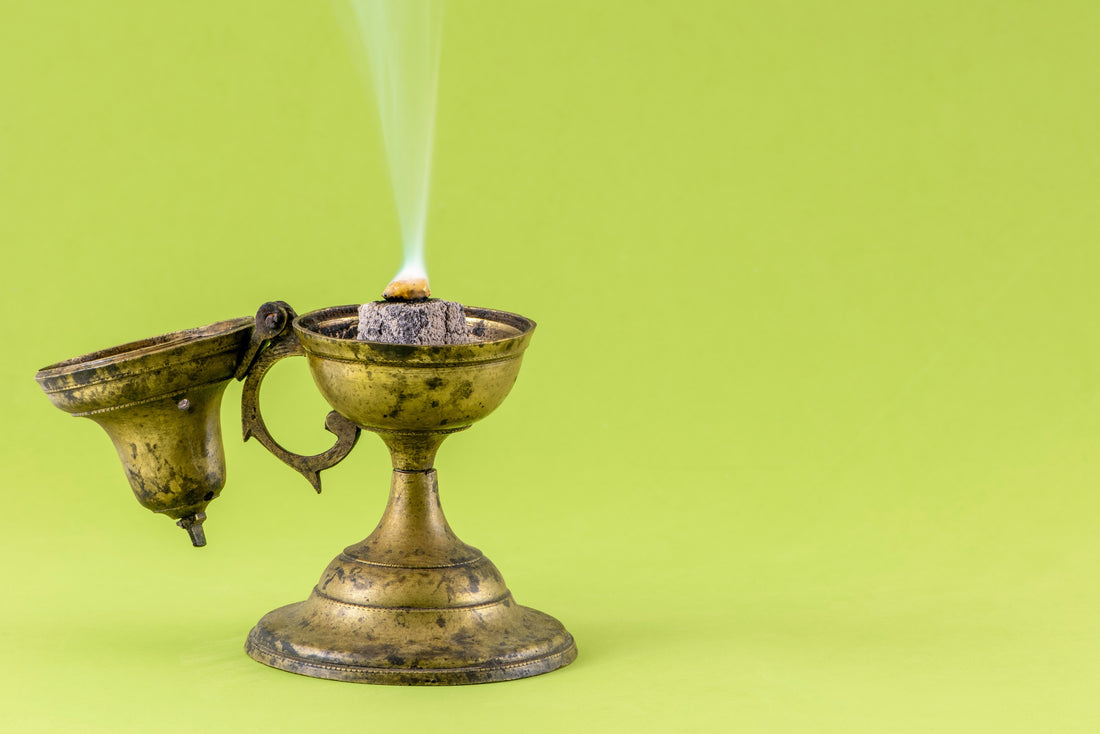
Frankincense: Unveiling the Sacred Resin’s Rich History and Timeless Cultural Significance
Share
Frankincense, Boswellia sacra: The Sacred Resin of History and Culture
For centuries, Boswellia sacra, commonly known as frankincense, has been revered for its fragrant resins that have played an essential role in ancient rituals, medicine, and cultural traditions across the globe. This remarkable tree, native to the arid regions of Oman, Yemen, and parts of Somalia, yields the resin we know as frankincense, a substance deeply woven into the fabric of human history. In this blog, we explore the historic use and cultural significance of Boswellia sacra, shedding light on why this botanical treasure remains beloved today.
The Origin of Boswellia Sacra
The Boswellia sacra tree thrives in the harsh, rocky landscapes of the Arabian Peninsula, where it has evolved to withstand extreme drought. Its gnarled branches and peeling bark are distinctive, and its resin, often referred to as the “tears” of the tree, is harvested by making small incisions in its bark. These incisions cause a milky sap to seep out, which hardens into golden or amber-hued droplets.
The cultivation of frankincense resin has been a tradition passed down through generations, particularly in the Dhofar region of Oman, known as the epicenter of high-quality frankincense production. The skills and knowledge required to harvest the resin have been preserved over millennia, making it both a cultural heritage and a vital economic resource for the region.
Historical Uses of Frankincense
The history of Boswellia sacra resin stretches back thousands of years. As one of the most sought-after trade commodities of the ancient world, frankincense was once worth its weight in gold. Its fragrant aroma and medicinal properties made it an indispensable part of ancient societies. Here are a few notable historical uses:
- Religious and Spiritual Rituals: Frankincense has been burned in temples and places of worship since antiquity. The ancient Egyptians used it to honor their gods, while in Christian traditions, it is famously associated with the biblical story of the Magi offering frankincense to the newborn Jesus. The smoky, uplifting aroma was believed to carry prayers to the heavens, purifying the space and inviting divine blessings.
- Embalming and Mummification: The Egyptians also employed frankincense in their elaborate mummification processes. The resin’s preservative properties helped protect the body against decay, while its fragrance masked the odors associated with the process. As part of sacred rituals, frankincense symbolized purification and eternal life.
- Medicine and Healing: In ancient Greek and Roman medicine, frankincense was widely used for its therapeutic properties. Physicians like Hippocrates and Dioscorides documented its uses for treating ailments ranging from digestive issues to respiratory infections. Traditional Ayurvedic and Chinese medicine also embraced frankincense for its anti-inflammatory and immune-boosting effects.
- Cosmetics and Perfumery: In addition to its spiritual and medicinal applications, frankincense was a key ingredient in ancient perfumes and cosmetics. Its natural astringent properties made it a popular choice for skin tonics, believed to promote youthful and radiant skin.
Cultural Significance of Boswellia sacra
The deep-rooted significance of Boswellia sacra transcends its practical uses. It holds symbolic meaning in many cultures, representing purity, protection, and spiritual connection. Throughout the centuries, frankincense has been a symbol of luxury, reverence, and status. The trade routes known as the Frankincense Trail spanned across the Middle East and North Africa, facilitating not only commerce but also the exchange of ideas and cultural practices.
In Oman, where Boswellia sacra is most abundant, the resin is still an integral part of the local culture. Omani families burn frankincense to welcome guests, purify homes, and ward off negative energy. The country’s rich history with the resin is so significant that the ancient port city of Al Baleed, a UNESCO World Heritage Site, stands as a testament to Oman’s central role in the historic frankincense trade.
The Modern Renaissance of Frankincense
In recent years, there has been a resurgence of interest in Boswellia sacra for its holistic benefits. Aromatherapy enthusiasts and natural health practitioners recognize the resin for its anti-inflammatory, antiseptic, and calming properties. The essential oil distilled from frankincense resin is highly valued for its ability to promote relaxation, enhance meditation, and reduce stress.
As more people seek natural remedies for wellness, frankincense has found its place in contemporary skincare, wellness, and aromatherapy products. Its timeless appeal lies in its ability to bridge the ancient and the modern, offering benefits that continue to be relevant in our fast-paced, technology-driven world.
The Enduring Legacy of Boswellia Sacra
The story of Boswellia sacra is one of resilience and reverence. Its resins have transcended the boundaries of time, geography, and culture to remain a symbol of purity, healing, and divine connection. As we continue to explore natural botanicals for their therapeutic effects, frankincense reminds us of the timeless wisdom of ancient traditions.
Whether it’s burning incense in a place of worship, diffusing its essential oil for a moment of calm, or applying it to the skin as part of a natural beauty regimen, the sacred resin of Boswellia sacra continues to inspire awe and appreciation.
Sources of Pure Frankincense
At The House of Botanicals, we honor the tradition of frankincense by sourcing only the highest quality Boswellia sacra essential oil distilled from the precious resin. Our products are carefully crafted to capture the essence of this ancient botanical, bringing its timeless benefits into your daily life. Visit thehouseofbotanicals.com to explore our frankincense ritual spray, and other aromatherapeutic offerings, and learn more about how this ancient treasure can elevate your well-being.
